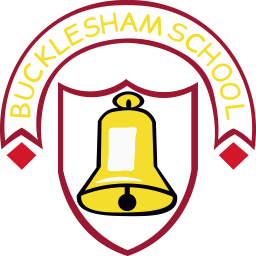History is the study of the past - learning about people, events, place and changes.
Intent - what do we want children to learn?
|
We aim for pupils to develop a strong knowledge of chronology, ask perceptive and challenging questions, evaluate information and think analytically about evidence. Through our teaching of history, we endeavour to challenge pupils to learn and understand the complexity of people’s lives, the courage and achievements of significant individuals in the past both in the local community and the wider world, the process of change, the diversity of societies as well as their own identity and challenges of their time. We want our pupils to understand how a knowledge and understanding of history impacts on the present day.
We use CUSP History curriculum. Each unit incorporates some of the Big Ideas - community, knowledge, invasion, civilisation, power and democracy. Each unit incorporates historical enquiry - learning about chronology, cause and consequence, change and continuity, similarity and difference, evidence and significance
Implementation - how are we going to achieve our intent?
Teaching and learning:
- Creative and inspiring lessons planned with opportunities for children to explore ideas and ask their own questions. We use CUSP to plan our History lessons.
- Exciting practical activities where possible to enable children to experience memorable events to embed the learning.
- Cross curricular links where possible, eg DT projects linked to History.
- Displays linked to the learning up on the walls and clear, with time lines in every classroom for history to develop understanding of chronology.
- A knowledge organiser in books for children to refer to with clear ‘sticky knowledge’ ideas in the planning and in the books.
- A knowledge note with the key question for the lesson and dual coded to reduce cognitive load.
- An informal ‘assessment’ of knowledge at the start and end of the topic eg. What we already know. What we want to find out. What we have learnt. Either as individuals or as a class or group and quizzing throughout the unit for retrieval practice.
|
|
Language development:
- New vocabulary embedded into children’s written work with a clear progression of topic-based history vocabulary from reception through to year 6.
- Opportunities for children to use more challenging vocabulary and challenged to spell it correctly.
- Examples of the new vocabulary embedded into other subjects such as English and in their verbal responses.
- Vocabulary noted in planning, displayed in the classroom and in books as part of the knowledge organisers.
Recording:
- Well-presented work at the same standard as would be expected in an English book. Handwriting neat and correctly formed and work set out carefully in order to communicate learning clearly.
- A knowledge note stuck in at the start of each new lesson.
- A range of methods of recording in both subjects including tables, graphs, charts, maps, labelling, captions, diagrams, photographs, questions and explanations, timelines.
- Minimal use of worksheets unless absolutely necessary.
- Opportunities for all children to write longer pieces linked to their work in history.
British values:
- Activities to promote a tolerance and respect for those of other cultures and beliefs and from other parts of the world.
- An understanding of the development of democracy, individual liberty and rule of law and a closer look at links with periods in history in KS2.
Culture Capital:
- Opportunities for trips and visits to other places of interest linked to the history topics.
- Visitors to the school linked to the history topics to inspire and support children’s knowledge further.
- Use of artefacts, purchased or loaned, to support children’s learning.
- Whole school or class dressing up history days to enable children to get a feel for a period in history eg. Tudor day, Victorian day etc
Cross Curricular links:
- English- texts to support learning in History; vocabulary to be challenging and relevant; drama or role play opportunities linked to events in history.
- ICT- use of laptops for research and maps; use of programmable toys such as Beebots or Lego Wedo linked to the history topic.
- Maths- development of recording using graphs or charts, particularly in KS2.
- MFL- links to places and events studied.
- PE- orienteering opportunities; dance linked to a period in history or a place.
- DT/Art- opportunities to develop knowledge of times, places and events through art work, cooking or DT, such as portraits of famous people from history, designing and making an aeroplane or a Viking ship etc.
- Music- songs, music or instruments from other times linked to history.
- Science- investigations linked to a history topic such as investigating the best material for making a stone age shelter or developments in science from history such as electricity.
|
Impact - what will it look like when we have achieved our intent?
Pupils show an enthusiasm for learning in history, with a growing knowledge of historical figures and events and where they fit on timelines. They have an awareness of the impact on our lives now, and lives in the future, of significant individuals and events from the past. They ask relevant questions and show an understanding of how to research events from the past using a variety of sources. They are developing a bank of history related vocabulary which is used in both their written and verbal communications.
|
Websites to support
We enrich our curriculum with visits to local historical sites such as Duxford and the Long Ship at Sutton Hoo.



We enrich our learning by learning outside. This is a Neolithic Stone Age settlement.





